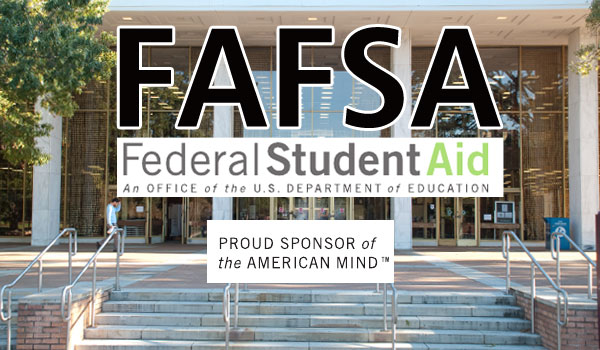Education: It’s FAFSA Time
Story by Christine M. Hall, Ed.D., president of CMH College Consulting in Cary.
Cary, NC – It’s January and for parents of high school seniors and college-aged kids, it signifies the arrival of this year’s FAFSA, or Free Application for Federal Student Aid. It can be a baffling business, but here’s a quick rundown plus some reasons why you probably should fill out this form.
What is FAFSA
For those unfamiliar with the term, FAFSA is the tool that helps determine a family’s eligibility for federal grants, loans and work-study as mandated by the Higher Education Opportunity Act.
Essentially, the completion of the FAFSA allows the government to use your tax returns to determine what your Expected Family Contribution (EFC) to your child’s education should be and what type of aid you may qualify for.
Expected Family Contribution
First, using your 2012 tax return, complete the FAFSA application on line (Free Application for Federal Student Aid.) This should take about 15-30 minutes.
Once you submit FAFSA, you will immediately receive your Expected Family Contribution (EFC). Your EFC is the amount of money, based on your reported income and finances, that you are EXPECTED to contribute to your child’s education. For those families with more than one child in college, this number is for the ENTIRE family and can then be divided by the number of kids in college!
The concept of an EFC is fairly simple to understand once you realize what it really means. Assume the FAFSA declares that your EFC is 15k. This means that you are expected to come up with the first $15k of your child’s college expenses. In NC, that means you are footing the entire tuition bill, however, depending on which UNC you are attending, you may have additional expenses up to 22k to cover. Completing the FAFSA lets the college know that you need help covering that last 7k. How the college chooses to handle this is up to them. However, for state institutions, you can generally expect to be offered some type of loan to cover that additional cost.
Private vs Public
So how does this work for private colleges? Assume your child applied to a school like Davidson or Duke, both of whom claim to meet 100% of financial need. With estimated sticker prices above 50K, the EFC, in this case 15k, is deducted from the 50k, leaving a balance of 35k. Assuming the schools follow through with their claims, your child would then have the remaining balance covered by some combination of grants, loans or work-study.
In NC, UNC Chapel Hill is the only school that guarantees 100% of your need be met. Depending on your circumstance, and their coffers, you can be offered anything including loans, grants and work-study.
Under $250K, Do FAFSA
With the rising cost a both public and private college education, it is advisable for families whose incomes are under 250k to complete the FAFSA.
It’s important to note that even if you don’t expect to qualify for money, the FAFSA is also required to obtain Stafford Loans low interest loans backed by the Department of Education.
Explore Your Options
While the financial aid process can often appear overwhelming, the notion of EFC is fairly clear and will give you a good idea of what you can expect in aid. So before you declare that you child must attend a community college or particular in-state college, take the time to explore your options.
You may find the price of a private college to be as attainable as the state schools.
Final Note
Note: If you haven’t filled out your 2012 Taxes forms yet (and who has??) you can still complete the online FAFSA form, get your PIN and go back and update later when have completed your taxes. By completing the form early, you are in the queue for the aid you may need. So don’t wait!
——————————————————————————————-
Photo of University of South Carolina library by Hal Goodtree.




Christine,
I have two questions:
I was under the impression that Davidson, Wake Forest and Duke also meet 100% of need. No?
When a family fills out the FAFSA with two in college, I thought they needed to complete one for each student and the resulting EFC is what the family is expected to pay for that student. It sounds like you’re saying you fill out one and divide the resulting EFC in two. Is that correct?
Thanks!
Davidson, Wake Forest and Duke do meet 100% of financial aid – they are private colleges, whereas UNC Chapel Hill is the only public state university in NC that guarantees meeting 100% of need.
Regarding the FAFSA and two students in college, you must fill out a FAFSA for each student. However, when the EFC is calculated for EACH student, the number will be approximately half of what it would have been had you only had one in college. Also, depending on the year of the student and their work earnings, both numbers may not be the same.